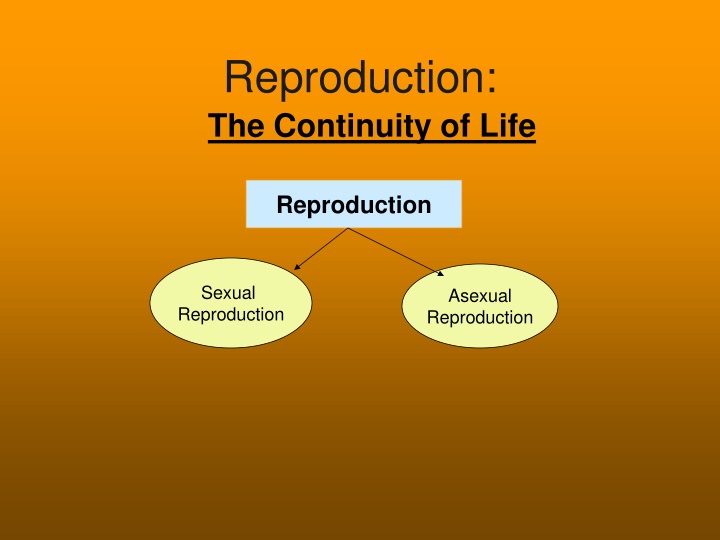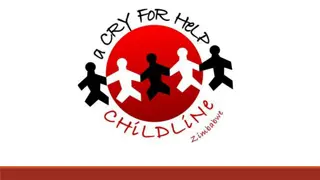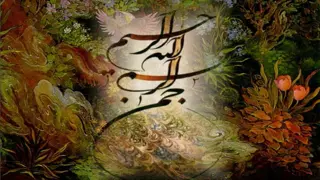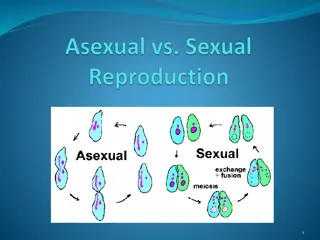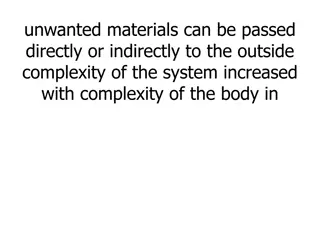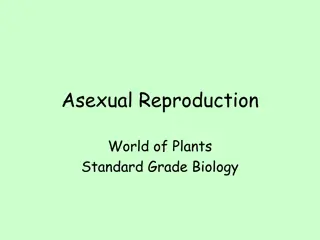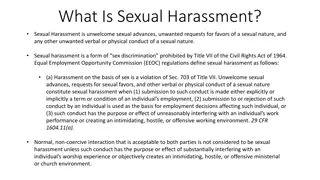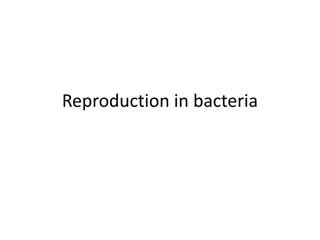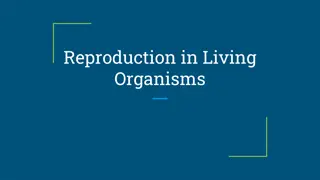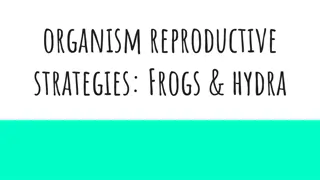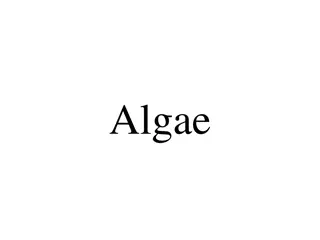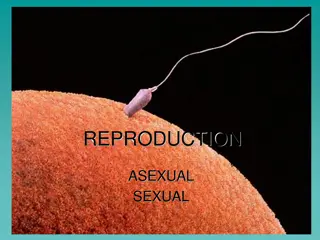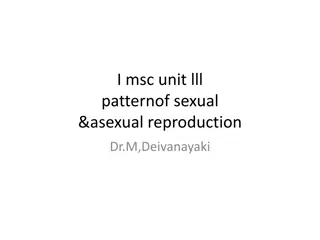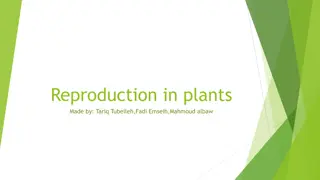Reproduction: The Continuity of Life - Sexual and Asexual Reproduction
Explore the mechanisms of sexual and asexual reproduction in the fascinating cycle of life. Discover how different species perpetuate themselves through diverse methods, ensuring the continuity of life on Earth.
Download Presentation

Please find below an Image/Link to download the presentation.
The content on the website is provided AS IS for your information and personal use only. It may not be sold, licensed, or shared on other websites without obtaining consent from the author.If you encounter any issues during the download, it is possible that the publisher has removed the file from their server.
You are allowed to download the files provided on this website for personal or commercial use, subject to the condition that they are used lawfully. All files are the property of their respective owners.
The content on the website is provided AS IS for your information and personal use only. It may not be sold, licensed, or shared on other websites without obtaining consent from the author.
E N D
Presentation Transcript
Reproduction: The Continuity of Life Reproduction Sexual Reproduction Asexual Reproduction
Asexual Reproduction: Genetically Identical Offspring Budding Regeneration Parthenogenesis Cloning???
Budding Budding New Organisms Arise as an Outgrowth from the Parent Organism Seen Mostly in Marine Animals Examples Include; Sponges, Corals and Jellyfish Coral Polyp Photo courtesy Jeffrey N. Jeffords http://oceanworld.tamu.edu/students/coral/coral1.htm
Regeneration Regeneration This refers to the ability of some animals to re- grow severed parts. Some of these animals can also grow new organisms from the severed pieces (Segmented Worms and Sea
Parthenogenesis Parthenogenesis Offspring can arise from unfertilized eggs. Includes some Fish, Reptiles, Amphibians and Aphids. Most of these species can switch between Sexual and Asexual Reproduction. http://aolsearch.aol.com/aol/imageDetails?in vocationType=imageResults&query=photos +of+parthenogenic+species&img http://www.duke.edu/%7Ejsr6/ Hawaiipics/Rhampho.jpg http://spot.colorado.edu/~noyesr/TEACHING/ 4800%20Fall%202002.%20Biology%20and% 20Evolution%20of%20Sex/Gynogenesis.Poec ilia.pdf www.ag.ndsu.nodak.edu
WHY??? WHY??? Why would these organisms prefer asexual reproduction in stable conditions and sexual reproduction in more uncertain or less favorable conditions?
Imagine Imagine Imagine that a particular organism within a species lacks a certain gene (or ability to express a certain gene) necessary to break down a specific type of food, yet others of the same species within the population are able to break down that food. What happens if the uncertain or less favorable conditions lead to that being the primary food source?
Death Death The parent organism and all of their offspring produced through parthenogenesis would die! But, with the genetic diversity that comes from sexual reproduction the possibility of the offspring surviving is enhanced.
This powerpoint was kindly donated to www.worldofteaching.com http://www.worldofteaching.com is home to over a thousand powerpoints submitted by teachers. This is a completely free site and requires no registration. Please visit and I hope it will help in your teaching.
